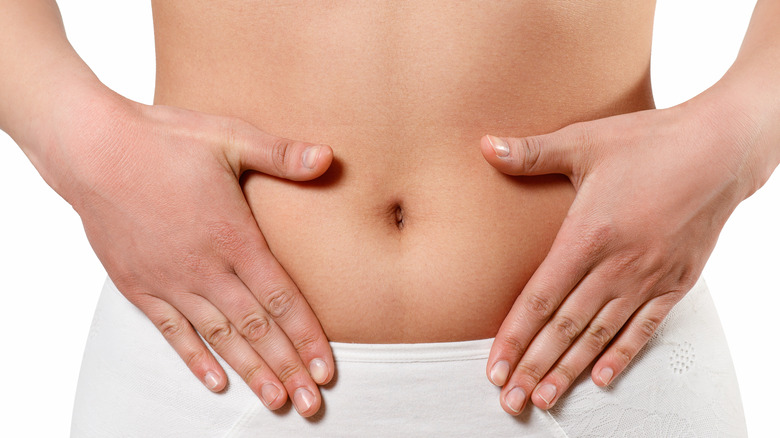The Unexpected Place You Can Get A Yeast Infection
Yeast can be found both internally and externally on our bodies (via Johns Hopkins Medicine). Thriving in moist environments, when too much of this fungus begins to develop, it can lead to candidiasis — otherwise known as a yeast infection. Certain factors can make us more susceptible to yeast infections; these include the use of antibiotics or dentures, as well as certain health conditions such as cancer or diabetes.
Depending on where the infection develops, symptoms may include discharge, burning sensations, itching, redness, and pain, according to Johns Hopkins Medicine. While commonly associated with areas such as the genitals, yeast infections can also develop in the mouth, nail beds, and other areas. In fact, there's one spot on the body where yeast can hide that you may never have thought twice about. Home to more than just the occasional piece of lint, this body part also houses over 60 different types of bacteria, reports Medical News Today. Any guesses?
Don't forget this body part when bathing
Correct answer: the belly button. Able to grow between our skin folds, yeast can overpopulate in our belly button if we don't practice proper hygiene (via Healthline). Along with itching, redness and white discharge can accompany a yeast infection of the belly button.
A doctor may prescribe medication, but otherwise, antifungal powders and creams can be purchased over-the-counter (OTC) without a prescription to treat the infection (via Medical News Today). In addition, experts suggest avoiding sugar while treating the infection, as sugar acts as a food source for yeast.
To help protect against the development of a yeast infection, Healthline stresses the importance of keeping our belly buttons washed and dry. Using a washcloth, clean the inside of your belly button daily with either a saltwater solution or antibacterial soap and water, and be sure to thoroughly dry the area after bathing. There is no need to moisturize, as doing so can clog up the belly button and foster the growth of yeast. Lastly, wearing loose, breathable fabrics can prevent belly button skin irritation.


